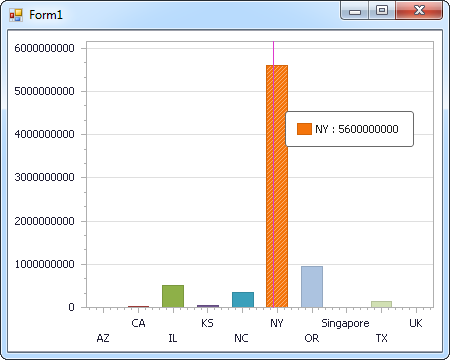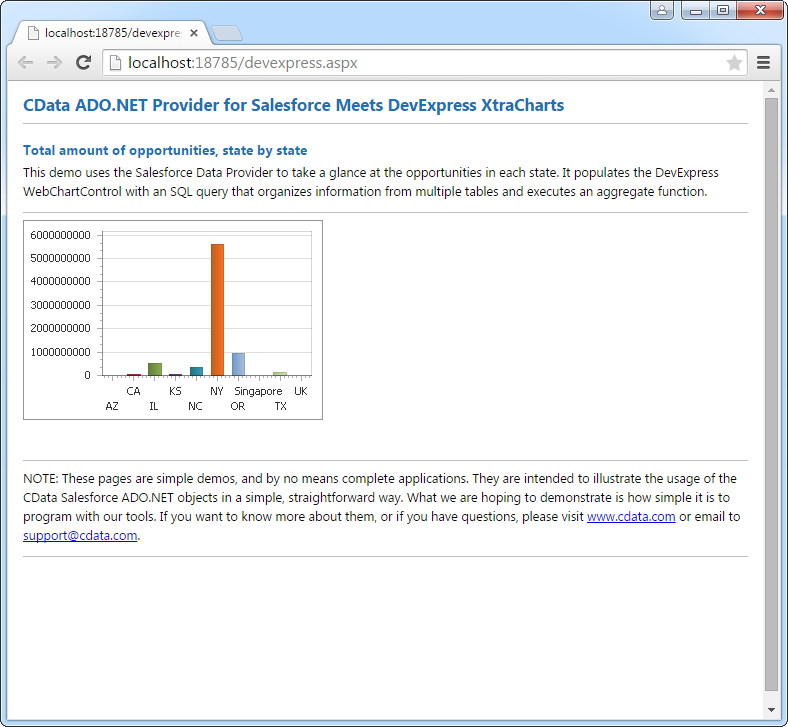Discover how a bimodal integration strategy can address the major data management challenges facing your organization today.
Get the Report →DataBind Power BI XMLA Data to the DevExpress Data Grid
Use the CData ADO.NET Provider for Power BI XMLA with the DevExpress Windows Forms and Web controls to provide Power BI XMLA data to a chart.
The ADO.NET Provider for Power BI XMLA by CData incorporates conventional ADO.NET data access components compatible with third-party controls. You can adhere to the standard ADO.NET data binding procedures to establish two-way access to real-time data through UI controls. This article will demonstrate the utilization of CData components for data binding with DevExpress UI Controls (Windows Forms and Web controls), specifically binding to a chart that visualizes live data.
By default, use Azure AD to connect to Microsoft Power BI XMLA. Azure AD is Microsoft’s multi-tenant, cloud-based directory and identity management service. It is user-based authentication that requires that you set AuthScheme to AzureAD.
For more information on other authentication schemes, refer to the Help documentation.
Windows Forms Controls
The code below shows how to populate a DevExpress chart with Power BI XMLA data. The PowerBIXMLADataAdapter binds to the Series property of the chart control. The Diagram property of the control defines the x- and y-axes as the column names.
using (PowerBIXMLAConnection connection = new PowerBIXMLAConnection(
"AuthScheme=AzureADInitiateOAuth=GETANDREFRESH")) {
PowerBIXMLADataAdapter dataAdapter = new PowerBIXMLADataAdapter(
"SELECT Country, Education FROM Customer WHERE Country = 'Australia'", connection);
DataTable table = new DataTable();
dataAdapter.Fill(table);
DevExpress.XtraCharts.Series series = new DevExpress.XtraCharts.Series();
chartControl1.Series.Add(series);
series.DataSource = table;
series.ValueDataMembers.AddRange(new string[] { "Education" });
series.ArgumentScaleType = DevExpress.XtraCharts.ScaleType.Qualitative;
series.ArgumentDataMember = "Country";
series.ValueScaleType = DevExpress.XtraCharts.ScaleType.Numerical;
chartControl1.Legend.Visibility = DevExpress.Utils.DefaultBoolean.False;
((DevExpress.XtraCharts.SideBySideBarSeriesView)series.View).ColorEach = true;
}

Web Controls
The code below shows how to populate a DevExpress Web control with Power BI XMLA data. The PowerBIXMLADataAdapter binds to the Series property of the chart; the Diagram property defines the x- and y-axes as the column names.
using DevExpress.XtraCharts;
using (PowerBIXMLAConnection connection = new PowerBIXMLAConnection(
"AuthScheme=AzureADInitiateOAuth=GETANDREFRESH"))
{
PowerBIXMLADataAdapter PowerBIXMLADataAdapter1 = new PowerBIXMLADataAdapter("SELECT Country, Education FROM Customer WHERE Country = 'Australia'", connection);
DataTable table = new DataTable();
PowerBIXMLADataAdapter1.Fill(table);
DevExpress.XtraCharts.Series series = new Series("Series1", ViewType.Bar);
WebChartControl1.Series.Add(series);
series.DataSource = table;
series.ValueDataMembers.AddRange(new string[] { "Education" });
series.ArgumentScaleType = ScaleType.Qualitative;
series.ArgumentDataMember = "Country";
series.ValueScaleType = ScaleType.Numerical;
((DevExpress.XtraCharts.SideBySideBarSeriesView)series.View).ColorEach = true;
}







